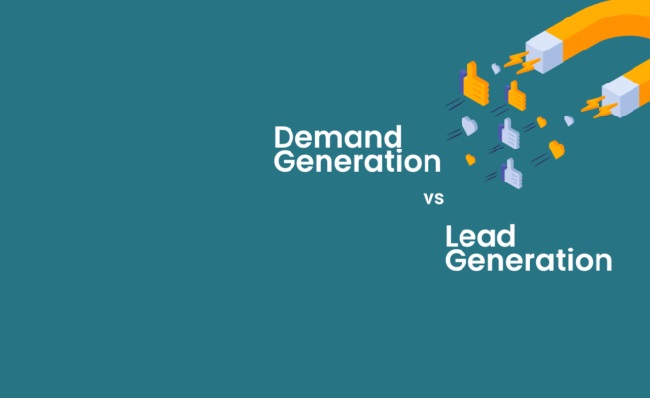Lead generation and demand generation are often mistaken as the same strategy, but there are significant differences between the two. Experienced marketing professionals are quick to testify that the two types of inbound generation are complementary.
Chances are your business is already using both forms of interest generation, but you might not know it yet. If you are like most Business owners and managers, your focus is justifiably on perfecting your value proposition and pleasing current customers.
However, it is in your interest to prime the customer pump with comprehensive inbound marketing.
Here’s a quick look at the substantive differences between lead generation and demand generation.

Exploring the Differences Between the Two Types of Marketing Generation
Demand gen marketing primarily centers on creating awareness of a company and its brand. Successful demand generation educates potential customers about how the value offering solves a problem, fulfills a need, or satisfies a desire.
In contrast, lead generation is primarily centered on converting potential customers exposed to demand-generation content. Lead generation moves qualified leads through the sales funnel so they can convert into paying customers.
Read Also:
Lead generation is completely distinct from demand generation, as the focus is on capitalizing from the buzz and excitement built with content marketing meant to ramp up prospect enthusiasm. The failure to properly educate the targeted group ultimately makes it that much more challenging to convert leads.
Generating Interest Vs. Converting Prospects
Lead generation and demand generation are the yin and yang of contemporary marketing. When used in unison, lead and demand generation form an overarching marketing process.
Once interest is generated through demand marketing, the focus shifts to converting leads developed earlier in the sales cycle.
Lead generation requires strategic segmentation to improve relations with the audience, as well as data analysis of the prospects who were exposed to the company’s advertising content in the demand generation phase.
The next step is to properly align the internal content marketing, sales, and customer teams to collaborate in the spirit of reaching the end goal of lead conversion.
The challenge lies in optimizing the timing of the sequence between demand generation and lead generation.
If you fail to identify and engage leads through truly captivating demand generation, you will find lead generation is somewhat doomed.
If both of these moving parts of marketing are not working in rhythm, the end result will be insufficient demand, insufficient leads, and a lack of potential sales volume.
A Difference in Outcomes
Outcomes are the primary differentiator between lead generation and demand generation. The outcome of a business or marketing process matters more than anything else.
The optimal outcome of demand generation is the initial planting of the metaphorical seeds that motivate prospects to become actual leads. Such seeds gradually sprout within the minds of targeted prospects, eventually leading to the purchase of the service or item.
The desired outcome of lead generation is quite different from that of demand generation, as there is an attempt to gather important information about potential customers.
Successful lead generation collects contact information to facilitate communication for sales purposes. The most successful lead generation efforts collect information such as names, email addresses, and phone numbers.
An Overarching Philosophical Difference

One key difference is the mindsets between demand generation and lead generation. Each form of generation requires a unique approach that is distinct in overarching philosophical components as well as goals.
Generating demand requires paying attention to the needs of target customers. Hiking demand for the service or Product that solves customers’ problems leads to conversion.
In contrast, lead generation is more geared toward scaling, meaning expanding the business. Lead generation attempts to attract prospective buyers, move them through the sales funnel’s end, and add to revenue.
Read Also:
Recognize the Differences and Move Forward With Both
Lead generation and demand generation clearly have different purposes and require distinct strategies for attaining their respective aims. However, both wings of inbound marketing are similar in that they work in tandem to address customer problems.
In the end, the only thing that matters is that the business can generate demand, meet that demand with supply, and do so in a timely manner.
By using the two forms of marketing demand together and focusing on addressing customer problems, your business will succeed in capturing more market share.




















